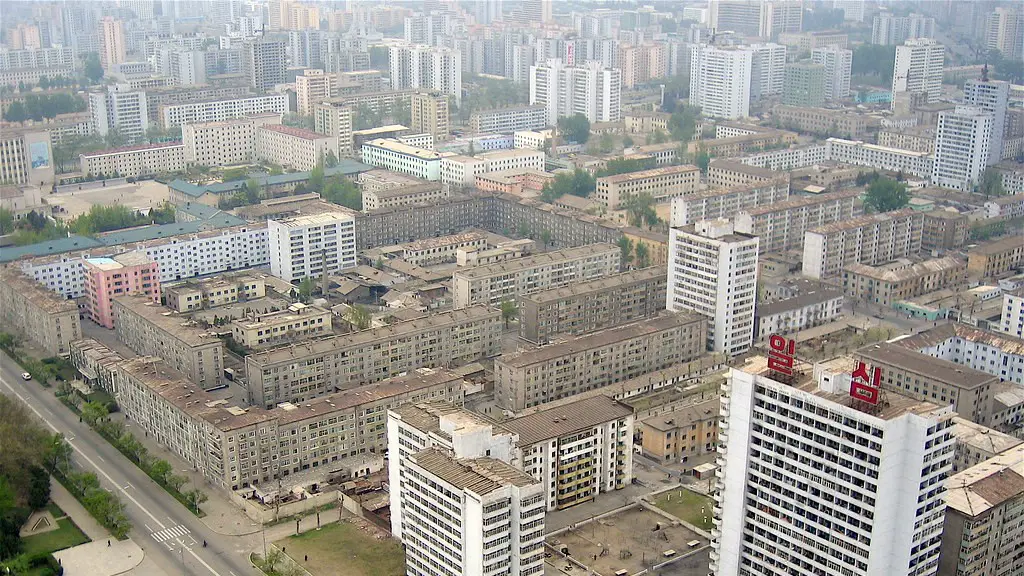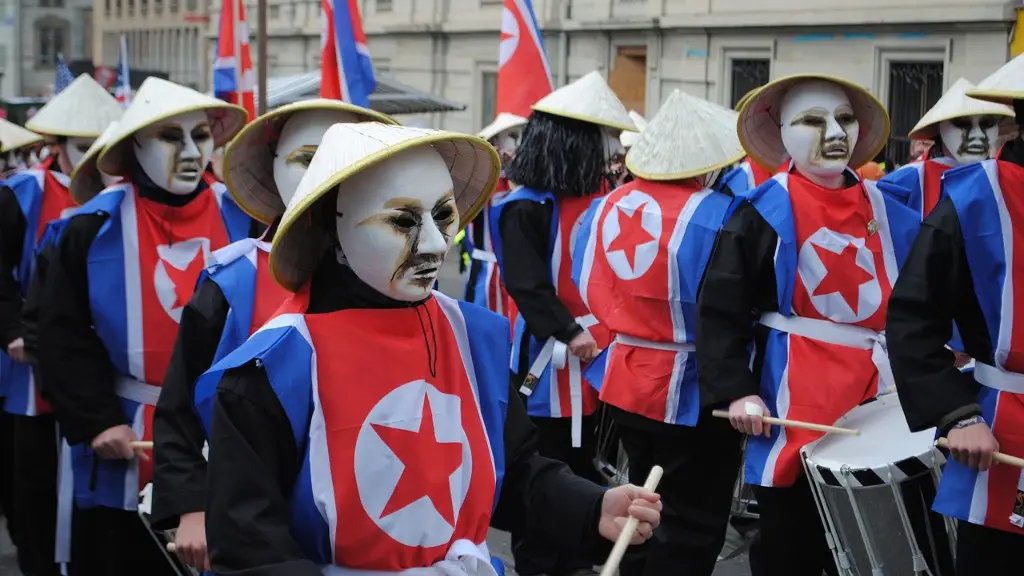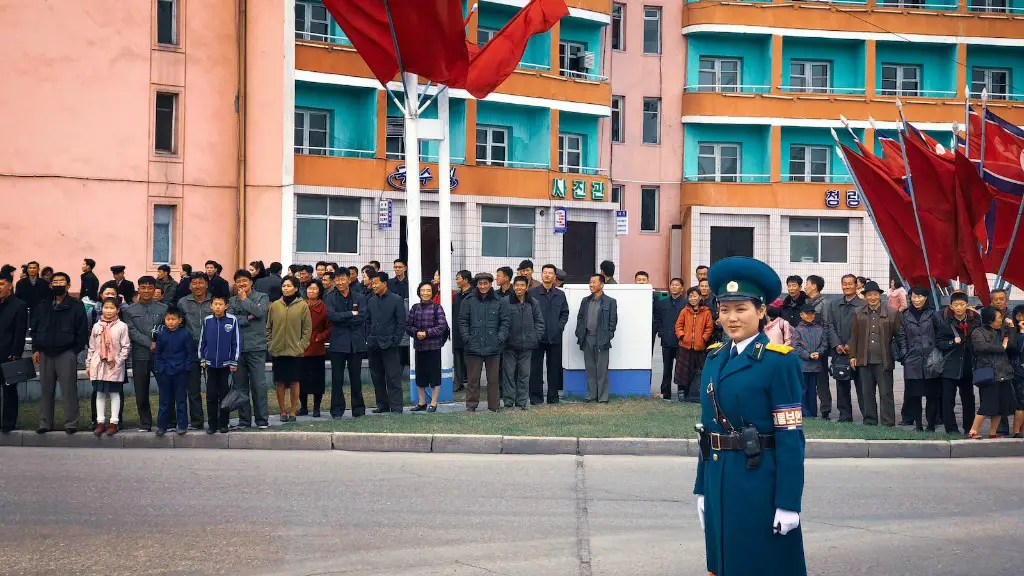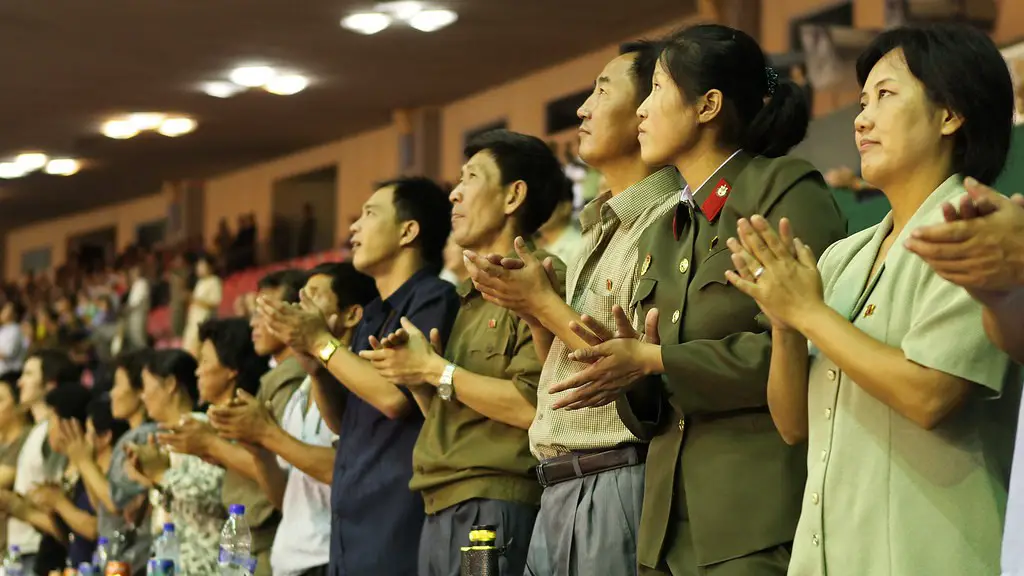In the aftermath of World War II, the Korean peninsula was divided into two Occupation Zones, with the northern zone being occupied by the Soviet Union and the southern zone being occupied by the United States. This division was meant to be temporary, but as the Cold War began to take hold, the two sides were unable to agree on a plan for reunification. As a result, two separate states emerged: the Democratic People’s Republic of Korea in the north, and the Republic of Korea in the south.
The two Koreas have been in a state of conflict ever since, with periodic flare-ups leading to serious tensions and, on occasions, open warfare. In recent years, North Korea has developed nuclear weapons, which has only increased the level of anxiety on the peninsula and in the broader region.
North and South Korea have been in a state of conflict since the 1950s. The specific event that started the conflict was the North Korean invasion of the South on June 25, 1950. The war lasted until an armistice was signed on July 27, 1953.
Why did North and South Korea split?
The United States’ policy toward Korea during World War II was to prevent any single power from dominating the Korean peninsula. This policy may have been the reason for the division of Korea into North and South at the 38th parallel. The division of Korea was likely intended to stop the Soviet Union’s advance southward, preventing them from gaining control over the entire peninsula.
The conflict between North and South Korea is largely due to the fact that both governments claim to be the only legitimate government in the Korean peninsula. This has resulted in a lot of tension and fighting between the two sides, which has unfortunately led to a lot of death and destruction. It’s really a shame that such a beautiful country has been caught in the middle of this conflict for so many years.
Can South Koreans go to North Korea
If you are planning to travel to North or South Korea, it is important to be aware that it is not possible to enter either country from the other. Even if you meet all the entry requirements, you may be arbitrarily arrested and/or detained at your point of entry. This is due to the ongoing tensions between the two countries, and the risk of being caught in the middle of a conflict.
The Korean War was a conflict between North and South Korea that began in 1950. However, no peace treaty was ever signed, and the two Koreas are technically still at war, engaged in a frozen conflict. In April 2018, the leaders of North and South Korea met at the DMZ and agreed to work toward a treaty to end the Korean War formally.
Who started the Korean War?
The Korean war began on June 25, 1950, when some 75,000 soldiers from the North Korean People’s Army poured across the 38th parallel, the boundary between the Soviet-backed Democratic People’s Republic of Korea to the north and the pro-Western Republic of Korea to the south. The United Nations, with the United States as the principal force, came to the aid of the South Koreans, and the Soviet Union, China, and North Korea came to the aid of the North. After more than three years of fighting, the war ended on July 27, 1953, with Korea still divided into two hostile states.
The Korean peninsula has been a bone of contention between North Korea and South Korea for many years. Both nations claim the entire peninsula and outlying islands, and both joined the United Nations in 1991. However, most member states only recognize one or the other, not both. In recent years, the two nations have held informal diplomatic dialogues in order to ease military tensions.
Why are we not allowed to go to North Korea?
If you are considering traveling to North Korea, the US Department of State strongly advises against it due to the extremely high risk of arrest and long-term detention. In 2018, several US citizens were detained by North Korean authorities and there is no way to ensure that you will not be detained if you travel there.
The Korean War began on June 25, 1950, when the Northern Korean People’s Army invaded South Korea in a coordinated general attack at several strategic points along the 38th parallel, the line dividing communist North Korea from the non-communist Republic . The war resulted in the death of over three million people, most of them civilians, and was the first major conflict of the Cold War era.
Are Americans allowed in North Korea
The restrictions on Americans traveling to North Korea are in place due to the increased tensions between the two countries. Although there are no official ban in place, it is strongly advised against for Americans to travel to North Korea. The previous restrictions that were in place prevented Americans from having any direct exchange activities with North Korean citizens, having direct contact with North Korean individuals within the DPRK, and traveling by train between Sinuiju and Pyongyang. These restrictions are still currently in place and it is advised that Americans do not travel to North Korea.
Since the government strictly controls all media in the country, accessing any media content that is not sanctioned by the government is illegal. This includes phones, computers, televisions, radios, and other media content. The government regularly cracks down on people who consume unsanctioned media, and these people are considered to be engaging in “anti-socialist behavior”.
Can Americans go to Korea?
As of September 1, 2021, US citizens traveling to Korea must have a valid visa or an approved Korea Electronic Travel Authorization (K-ETA) to enter the country. This is a new requirement that has been put in place by the Korean government. US citizens who do not have a valid visa or K-ETA will not be able to enter Korea.
The Armistice Agreement ended the fighting of the 1950-1953 Korean War and was signed by military commanders from the United States, the Korean People’s Army, and the Chinese People’s Volunteer Army. The agreement resulted in a ceasefire and the establishment of the Korean Demilitarized Zone.
Who are South Korea enemies
The designation of North Korea as the “main enemy” represents a change in how Seoul views Pyongyang. In the past, North Korea was seen as a troublesome neighbor, but not an enemy. This change in designation is likely due to North Korea’s continued threats against South Korea, as well as its development of nuclear weapons.
South Korea is one of the world’s largest economies, Ranking 10th If this is calculated per inhabitant, taking purchasing power parity into account, South Korea ranks 29th in the list of the richest countries. Inflation in South Korea in 2020 was around 250%.
Did the US win the Korean War?
The Korean War was a conflict between North Korea and South Korea that lasted from 1950 to 1953. The war began on June 25, 1950, when North Korean forces crossed the 38th parallel and invaded South Korea. The United Nations, with the United States as the main contributor, came to the aid of South Korea, and the conflict quickly escalated into a full-scale war. After three years of fighting, the war ended in a stalemate with the border between North and South Korea near where it had been at the war’s beginning.
The Japan-Korea Treaty of 1910 formalized Japan’s annexation of the Korean Empire, without the consent of the former Korean Emperor Gojong or the regent of the Emperor Sunjong. Upon its annexation, Japan declared that Korea would henceforth be officially named Chōsen (Japanese: 朝鮮). The annexation of Korea by Japan was a controversial move, and sparked international condemnation.
Conclusion
Between North and South Korea, there have been a series of confrontations, military skirmishes, and ballistic missile tests. The most recent and largest conflict was the Korean War, which lasted from 1950 to 1953.
The two Koreas have been locked in a cycle of violence and intimidation for decades, with occasional flare-ups. The most recent period of tension began in 2010, when North Korea launched an attack on a South Korean warship, killing 46 sailors. In response, South Korea began a series of military exercises with the United States, which North Korea interpreted as a threat. In 2013, North Korea announced that it had developed nuclear weapons, and the cycle of tension and hostility continued. In 2017, North Korea conducted a series of missile tests, and the United States responded with a show of force. The tensions between the two Koreas are likely to continue for the foreseeable future.





